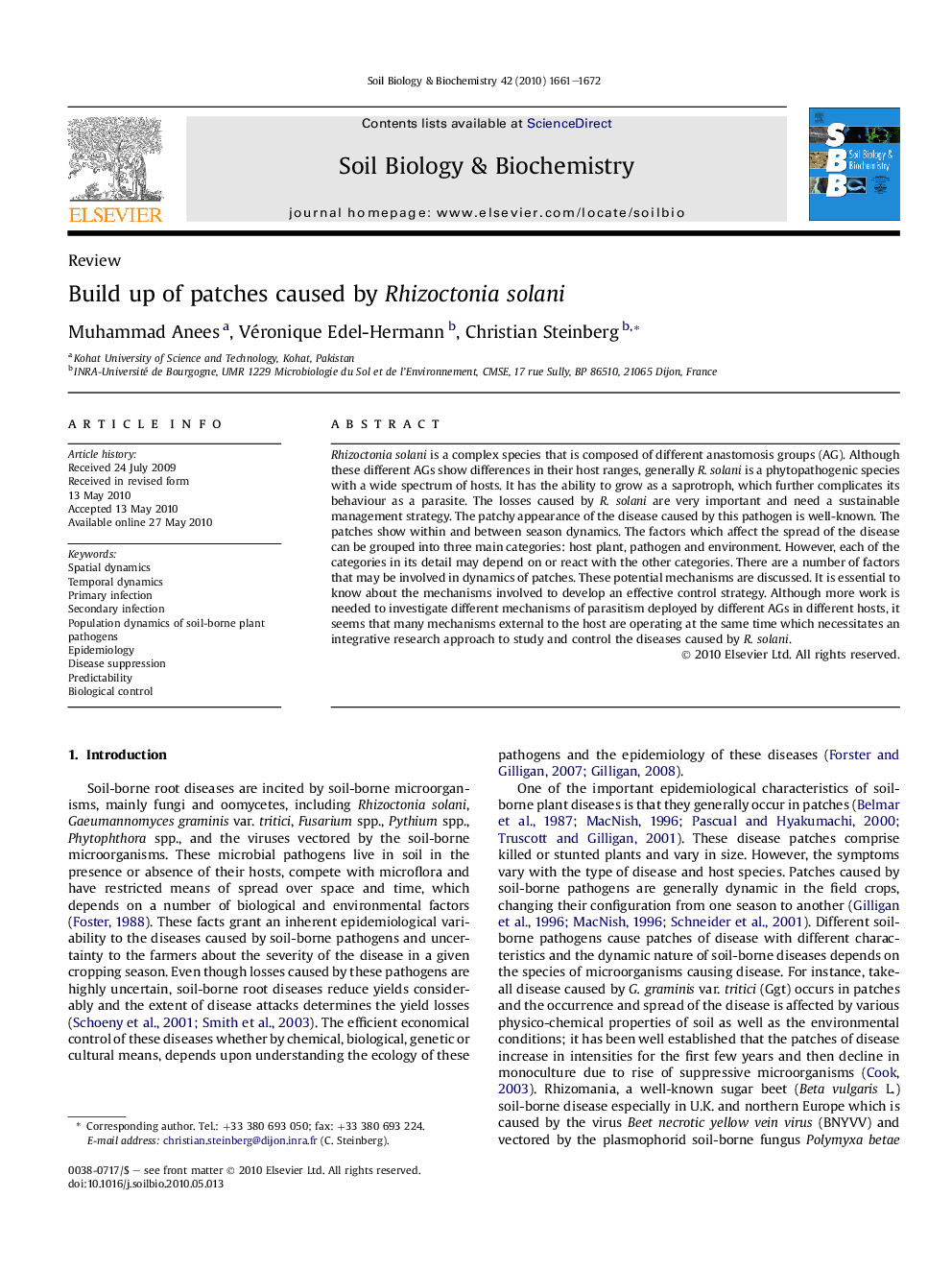| Article ID | Journal | Published Year | Pages | File Type |
|---|---|---|---|---|
| 2025400 | Soil Biology and Biochemistry | 2010 | 12 Pages |
Rhizoctonia solani is a complex species that is composed of different anastomosis groups (AG). Although these different AGs show differences in their host ranges, generally R. solani is a phytopathogenic species with a wide spectrum of hosts. It has the ability to grow as a saprotroph, which further complicates its behaviour as a parasite. The losses caused by R. solani are very important and need a sustainable management strategy. The patchy appearance of the disease caused by this pathogen is well-known. The patches show within and between season dynamics. The factors which affect the spread of the disease can be grouped into three main categories: host plant, pathogen and environment. However, each of the categories in its detail may depend on or react with the other categories. There are a number of factors that may be involved in dynamics of patches. These potential mechanisms are discussed. It is essential to know about the mechanisms involved to develop an effective control strategy. Although more work is needed to investigate different mechanisms of parasitism deployed by different AGs in different hosts, it seems that many mechanisms external to the host are operating at the same time which necessitates an integrative research approach to study and control the diseases caused by R. solani.
